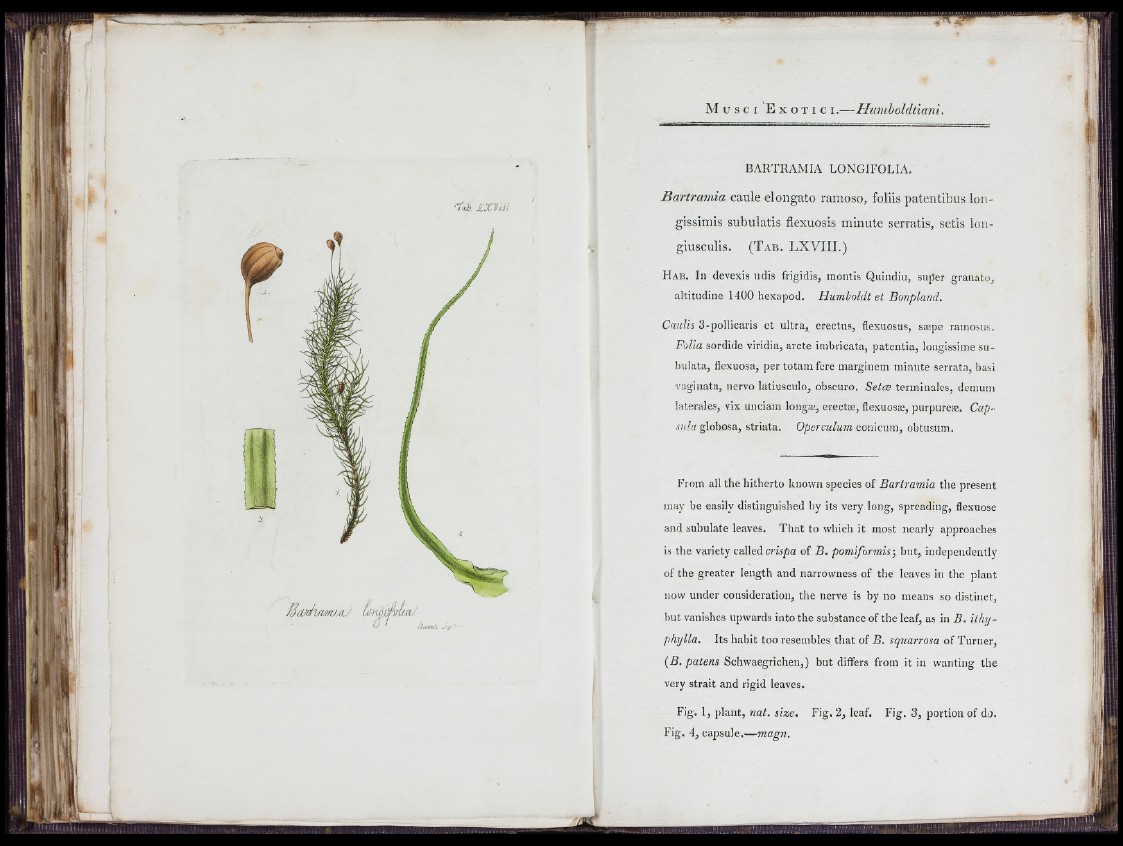
té . XX'IW
fSuai’iJ'i J.jJ
BARTRAMIA LONGIFOLIA.
Bartramia caule elongato ramoso, foliis patentibus lon-
gissimis subulatis fiexuosis minute serratis, setis ìon-
giusculis. ( T a b . LXVIII.)
H a b . In devexis udis frigidis, montis Quindiu, super granato,
altitudine 1400 hexapod. Humholdt et Bonpland.
Caulis 3-pollicaris et ultra, erectus, flexuosus, sæpe ramosus.
Folla sordide viridia, arcte imbricata, patentia, longissime subulata,
flexuosa, per totam fere marginem minute serrata, basi
vaginata, nervo latiusculo, obscuro. Setoe terminales, demum
laterales, vix unciam longæ, erectæ, flexuosæ, purpureæ. Caps'
« M globosa, striata. Operculum aoxâowvci, obtusum.
From ail the hitherto known species of Bartramia the present
may be easily distinguished by its very long, spreading, flexuose
and subulate leaves. That to which it most nearly approaches
is the variety called crispa of B , pomiformis; but, independently
of the greater length and narrowness of the leaves in the plant
now under consideration, the nerve is by no means so distinct,
but vanishes upwards into the substance of the leaf, as in B . ith y-
phylla. Its habit too resembles that of B. squarrosa of Turner,
{B, patens Schwaegrichen,) but differs from it in wanting the
very strait and rigid leaves.
Fig. 1, plant, nat. size. Fig. 2, leaf. Fig. 3, portion of do.
Fig. 4, capsule.—magn.
'L I
'.i